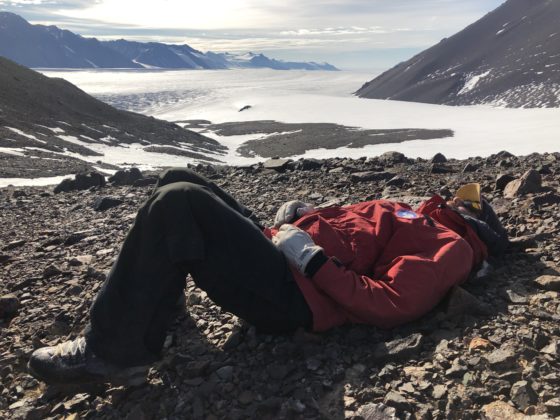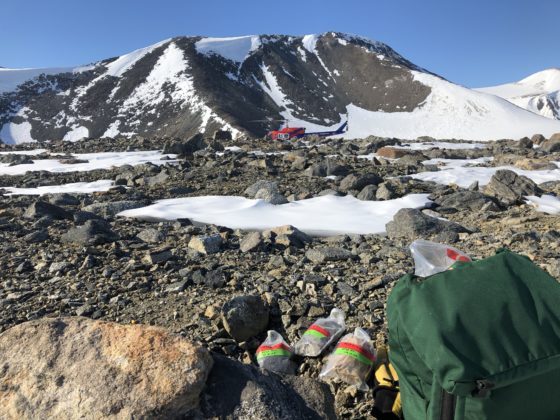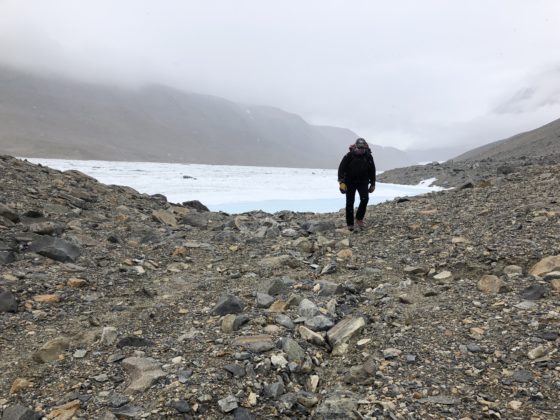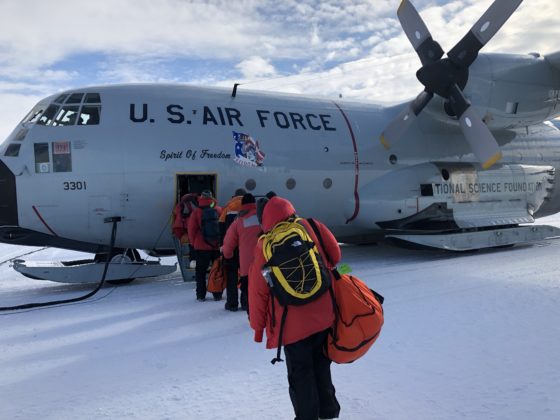
A team of scientific researchers was taking samples from a dry valley in the middle of Antarctica when they found a small white springtail on the underside of a rock.
As insignificant as finding a small primitive insect sounds, for BYU professor Byron Adams and his team, this was a major discovery. They finally found the missing “ghost creatures.”
“That was a pretty spectacular find for us,” Adams said.
The “ghost creatures” are a species of collembola, or primitive insects, discovered in the 1960s by Antarctica researcher Keith Wise. Originally found in only one small area of Antarctica, no other scientists could find the same insects that he found.
Adams, who is always affectionately referred to as Byron by his students and colleagues, searched all over Antarctica with his lab. They could not find the ghost creatures.
“We were starting to wonder if they even really exist,” he said.
They finally decided to go look for them in the exact place where Wise found them, which happened to be where Byron’s team was planning on collecting soil samples anyway.
Sure enough, the little creatures were crawling around underneath the rocks. According to their current research, the collembola only inhabits three little areas of land and cannot be found anywhere else in Antarctica.
The collembola insects move very little in their lifetimes. The only way for them to migrate is through open water, so they can only disperse in a small area of land depending on the water and ice levels. This allows scientists to look at the insect’s distribution in relation to ice and water levels and make inferences on climate change in the area.
“The little ghost collembola is kind of cute, and that’s a neat thing,” Byron said. But the real unique part of the story, he pointed out, is they can use the evolutionary history of the insects to answer questions about what the ice sheets have been doing over the last 20 million years.
This means biologists can now find answers to evolution questions and see climate-driven changes that before only geology and glaciology could show.
Byron and his team published a research paper in August 2020 on their discovery of the springtails.
Byron’s love for Antarctica began in 2001 when a colleague invited him to travel there to help with research. Byron immediately fell in love with the ecosystem of the area because Antarctica is, as he says, “a controlled experiment by Mother Nature.” The entire place is pristine in showing how ecosystems work because there is hardly any human interference in the region.
Byron now travels annually to Antarctica with a group of scientists and sometimes students.
When Byron goes to Antarctica, he said it doesn’t even feel like work. “(It) started out as scientists getting together. They’re all my very best friends and that makes it special,” he said.
Byron’s close friend and colleague Diana Wall has traveled with Byron to Antarctica almost every year. Wall is a well-known environmental scientist who has won many awards and is the founding director of the School of Global Environmental Sustainability at Colorado State University.
One of Byron’s close friends and environmental scientists Diana Wall said Byron has a remarkable ability to magnify knowledge with rigorous science and share why that knowledge is so important. She said he is a “superhero of science” whose students are also outstanding scientists.
The scientists who travel to Antarctica with Byron contribute their own expertise to add to the collaborative and diverse nature of the team. Byron is the ecology and organisms expert of the group.
His wife, Marci Shaver-Adams, said he thrives in the collaborative environment working with brilliant colleagues and friends and feeding off their energy.
Fusing Faith and Science
Byron teaches advanced biology and directs a lot of research at BYU. He said it is important for him to be engaged as a professor because his own world was changed by professors who invested in his success as an undergrad at BYU. He said he wishes to “return the favor” by helping his own students on their path to success.
“He’s like a chameleon,” Marci said. She said he can go from a science lecture for kindergartners to discussing the same subject with Ph.D. students just an hour later and still have the audience in the “palm of his hand.”
“I try to show them how face-melting science can be. I want to empower them with lifelong types of skills,” he said.
Byron has a knack for befriending his students and getting to know them. With a more personal relationship, he helps students do their own science and research and encourages them to become the best they can. He helps guide the students to their dreams and goals in the science world.
Biology senior Jinna Brim works in Byron’s lab and said he gives students the freedom to work on their own projects.
“He will support you in whatever you are interested in, and he will help you make it happen,” Brim said.
Brim said Byron works twice as hard as everyone else and always makes time for his students.
Byron also emphasizes fusing together religion and science. He has had many experiences in which some of his students doubt religion because critics say religion and science cannot coexist. Because of this, Byron is not afraid to tackle difficult concepts like evolution, gender and other areas of science that might seem incompatible with religion.
He said he hopes to enhance the view that science and religion complement rather than contradict each other.
“I try and let all my students know that I want you to bring the hardest questions you can think of. Bring it to this classroom, where we can pray and have the Spirit guide us, and ask the questions that you really struggle with and keep you up at night. Let’s bring that up now and figure it out now,” he said.
Byron’s teaching assistant Aurora Golden-Appleton said he is the “most ridiculously caring person.”
“He cares about the material and its impact on students and the world,” she said. Byron shows that it is possible to be a faithful Latter-day Saint and still participate in science, Golden-Appleton said.
Golden-Appleton said when she was Byron’s student, she had questions and concerns about one of his lectures. When she told him this, he met with her immediately to discuss everything she was worried about and didn’t leave until he knew her questions were answered.
He wants his students to know that there is a healthy way to navigate science and religion, and he cares about fostering the dialogue that comes with it. He said it is important to discuss those things now so his students are prepared when they go out into the world of science.
Dynamic Biology Duo
Byron met his wife Marci at BYU when they were both undergraduate students. They moved to Lincoln, Nebraska, so they could both attend graduate school, then moved to Florida where Byron worked as a professor at the University of Florida.
When Byron got offered a job at BYU, the west coast couple couldn’t pass up an opportunity to head back to the west side of the country.
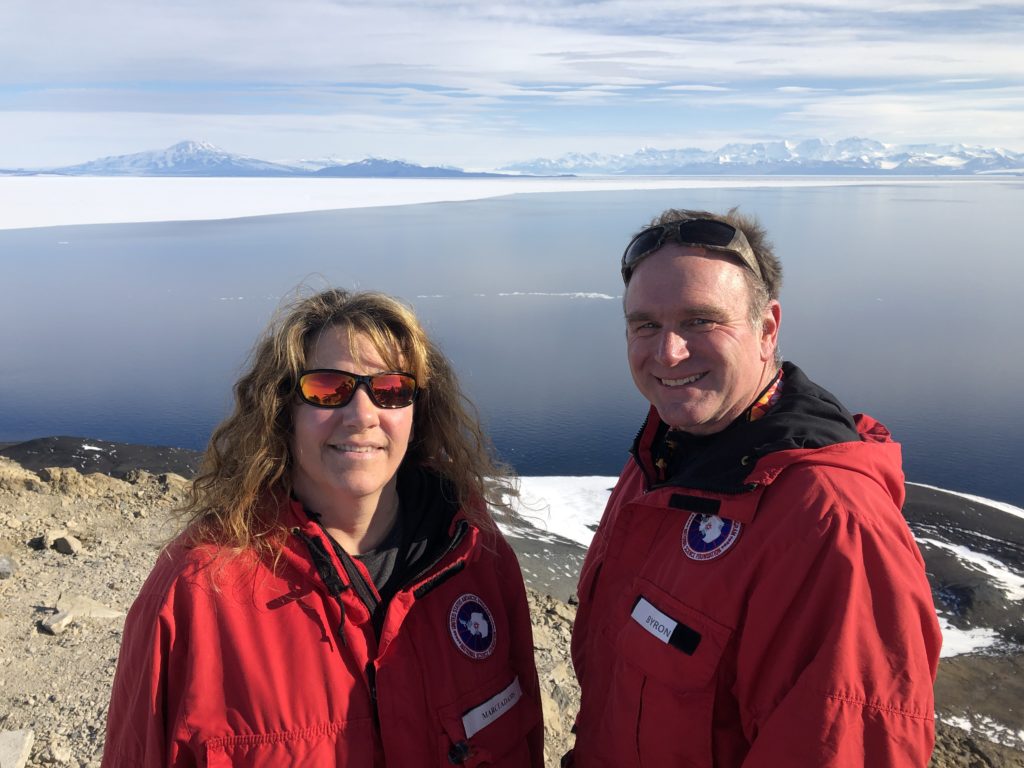
After a few years of Byron teaching at BYU, a job opened up for a biology professor to teach non-majors. Marci applied for the job and got accepted. Now the two are a dynamic duo teaching biology at BYU. She is a herpetologist who studies lizards, while he studies climate change and ecosystems.
Marci said that since she teaches non-majors biology, her demographic of students is very different from Byron’s. She has to convince her students to be interested in the material whereas Byron’s students are “already sold.”
Byron sometimes gives guest lectures in her classes as well, and she said students are always surprised that two biology teachers are married.
Hawaiian Shirts

colorful Hawaiian shirt and a BYU tie
for his academic photo. (BYU)
Byron is known for the iconic Hawaiian shirts he wears. In fact, in his official picture for BYU, he is wearing a bright, colorful Hawaiian shirt because Marci bet him “all the money in the world” that he wouldn’t wear it. So of course, when given the opportunity to take a picture for an award he was winning, Byron wore the colorful shirt with a BYU tie just to “get Marci’s goat” and win the bet.
Brim said he also wears his Hawaiian shirts in Antarctica for the “illusion of being warm” and to give him luck while researching.
Even though Byron can appear as a “surfer bro” because of his Hawaiian shirts and laidback demeanor, Golden-Appleton said he is incredibly passionate and driven in what he does. He engages in students’ lives, researches climate change and ecosystems, advocates for religion and science to coexist, and creates meaningful impacts in the lives of those around him.
“I get totally excited about the science and doing science that is meaningful and has an impact on making our world a better place. I feel exceptionally lucky and very blessed,” Byron said.

